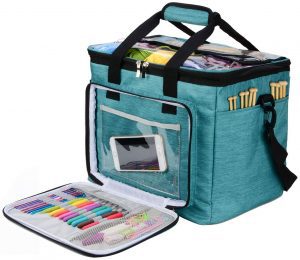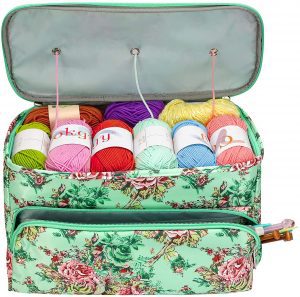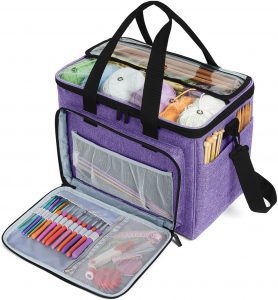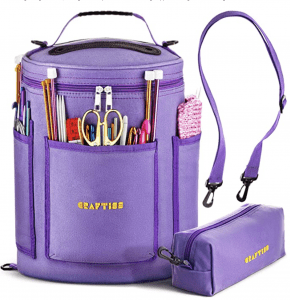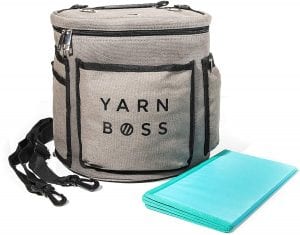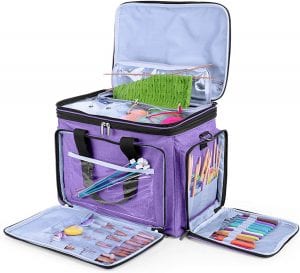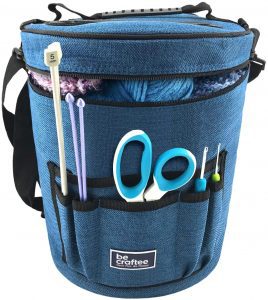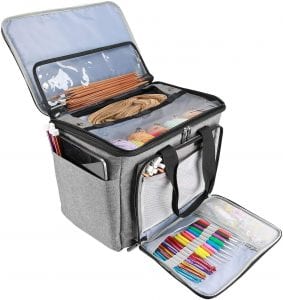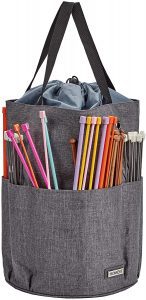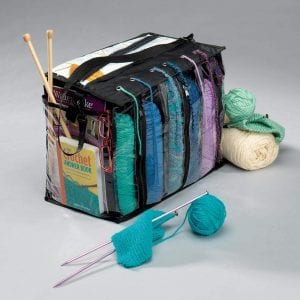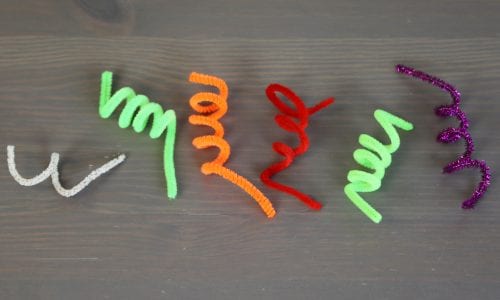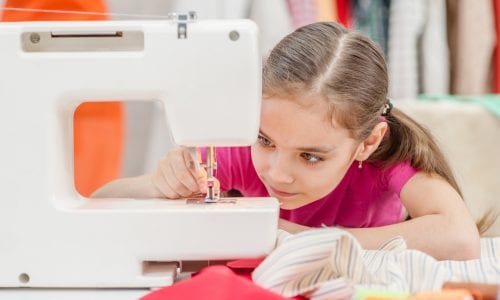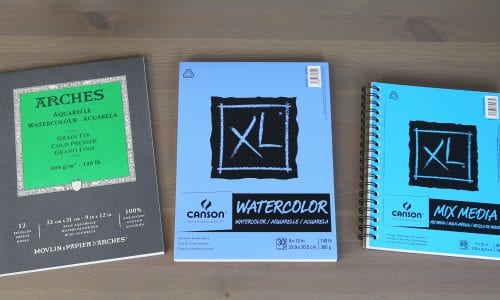The Best Knitting Bag

Our Review Process
Don't Waste Your Money is focused on helping you make the best purchasing decision. Our team of experts spends hundreds of hours analyzing, testing, and researching products so you don't have to. Learn more.
Our Picks For The Top Knitting Bags
- 1. Hoshin Compartmentalized Zippered Knitting Bag
- 2. LOOEN Portable Lightweight Knitting Bag
- 3. Teamoy Smart Design Spacious Knitting Bag
- 4. CRAFTISS On-The-Go Natural Canvas Knitting Bag
- 5. Yarn Boss Travel-Friendly Velcro Free Knitting Bag
- 6. Luxja Multi-Pocketed Nylon Knitting Bag
- 7. Becraftee Linen Crochet & Knitting Bag
- 8. ProCase 6 Compartment Crochet & Knitting Bag Organizer
- 9. HOMEST Hands-Free Carry Portable Knitting Bag
- 10. MEKBOK Transparent Plastic Knitting Bag
Storage space is no problem when you go with this large knitting bag. The interior features slots for six skeins, as well as a large spot to hold the project you're currently working on. The exterior of the bag has pockets for your knitting needles and a front compartment for all your accessories.
Multiple Color OptionsYou'll find this knitting bag comes in a choice of green, red or black.
If you love colorful floral patterns, this knitting bag is the way to go, as there are seven different prints to choose from. Each bag is lightweight and easy to transport, thanks to the upper carry handle. Users will appreciate the spacious interior, as well as the front pocket for organizing scissors, knitting needles and other supplies.
Most EconomicalStick to your craft budget with this affordably priced knitting bag.
Opting for two large and two small skein compartments, this knitting bag allows you to use the fluffiest wool you can find, or even double up on colors to work on longer and larger projects. Multiple zippered compartments and pockets allow you to tuck away every needle, hook and accent exactly where you want it.
Nylon BuildFor the organized crochet and knitting enthusiast, this crafting bag is optimized to give your material the space it needs.
A lightweight and simplistic approach to the knitting bag, this bag features a large central compartment for your project and six surrounding compartments with securing grommets to easily organize and prevent tangles. The drawstring closure offers quick and easy access to and stowing of your projects.
Six-Skein Drawstring ToteIts overall design makes this yarn tote a great choice for crafters who enjoy a fluid experience.
Buying Guide
When purchasing a knitting bag, consider how you will be using it. Evaluate the projects you will transport in the bag and how complex they will be, as well as how much yarn you plan to carry.
Consider if you will primarily use the bag to transport your knitting materials and tools from one place to another, or if this will be your command center, and all materials and tools will reside in the bag and nowhere else.
If you want to be able to work anywhere and anytime, you will want a different bag than if you plan to use the bag solely for transport between locations. Some bags have a variety of compartments for hooks, needles and yarn. You also can choose cases that are partly accessible via clear covers, so you can get to part of your project but keep the rest safe from kids and pets who might be nearby.
What to Look For
- When shopping for a knitting bag, consider the placement of zippers as opposed to grommets, and securing straps as opposed to slips in the fabric. Yarn will catch or tangle in different places, depending on how you prefer to use the bag.
- Be aware of how large the bag is, and how often you will be carrying it.
- If the bag is half your size and contains all of your knitting supplies, it will be difficult to take along on casual trips or tuck out of the way when not in use.
- Different people have different needs from their yarn bags. Price does not correlate to quality, and if the pockets don’t hold your needles and hooks, it will be useless to you.
More to Explore
Modern computer coding owes a debt to knitting and weaving. The 1s and 0s in binary come from the simple “over” and “under” instructions of knitting and weaving.
The computer memory for the first space missions was hand-woven out of metal wires by women from a nearby textile factory and was sometimes called “Little Old Lady” memory.
This can be seen in the use of ropes of punch cards in the Jacquard Loom, invented in 1839, but with roots as far back as 1725, to tell an automatic loom how to weave complex patterns.

